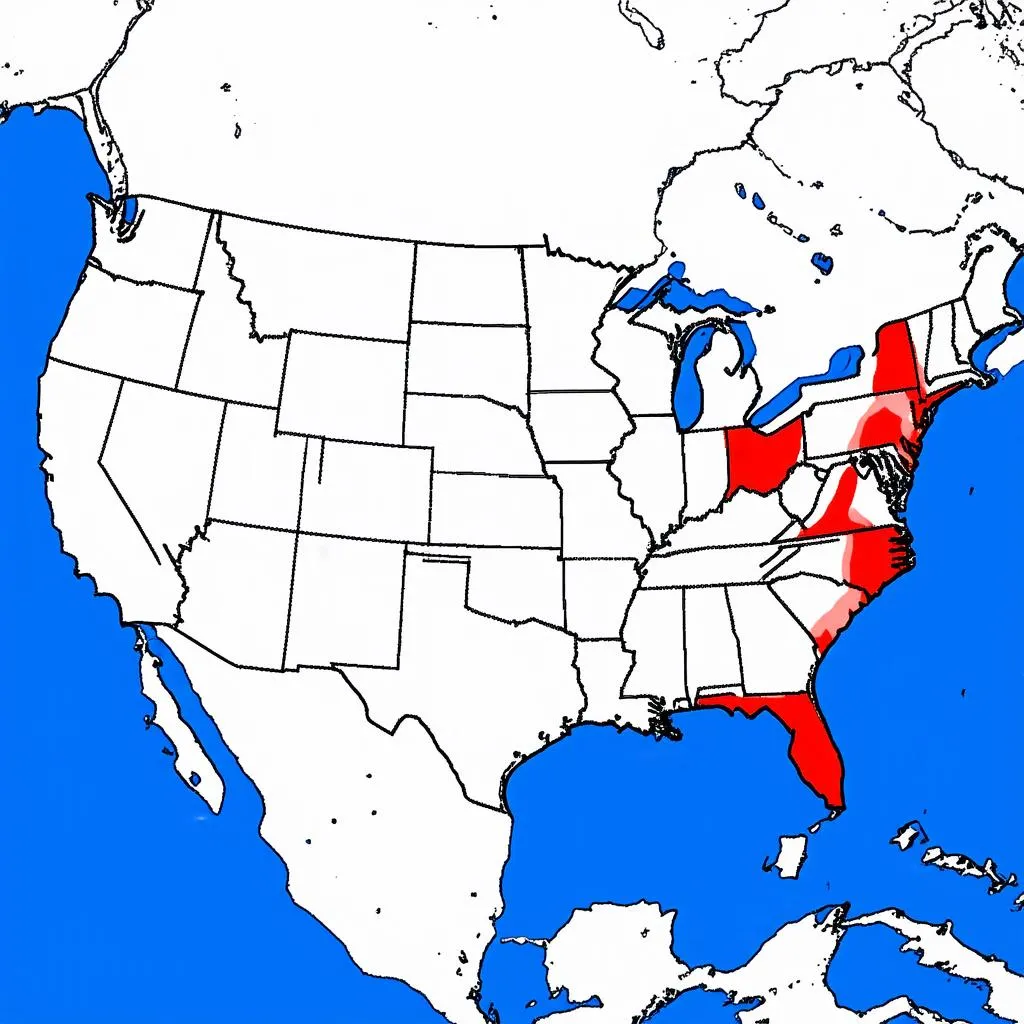Have you ever been captivated by the allure of the open road, that irresistible urge to pack your bags and embark on an epic interstate adventure? The freedom to explore new horizons, to immerse yourself in different cultures and landscapes, is a siren song that calls to many of us. But amidst this wanderlust, a question often arises: “Am I Allowed To Travel Interstate?”
This comprehensive guide will navigate the ins and outs of interstate travel, addressing common questions, providing essential tips, and ensuring your journey is smooth and worry-free.
Understanding Interstate Travel Restrictions
While the United States generally allows for free movement between states, certain situations might restrict your ability to travel interstate. Let’s delve into the most common scenarios:
Legal Obligations
1. Probation or Parole: If you’re on probation or parole, crossing state lines without permission from your probation officer or parole board is typically prohibited.
Example: John, a resident of New York City, is on probation for a DUI conviction. He wants to visit his family in Philadelphia but needs written consent from his probation officer before traveling to Pennsylvania.
2. Custody Orders: Interstate travel with a child subject to custody arrangements often requires consent from all parties with legal custody. Failure to comply could have serious legal ramifications.
3. Outstanding Warrants: If you have any outstanding warrants, traveling interstate can lead to detention or arrest.
Tip: Before embarking on your journey, it’s crucial to consult with an attorney or legal professional to understand how these legal obligations might impact your specific situation.
Public Health Emergencies
During public health emergencies, such as the COVID-19 pandemic, states may implement travel restrictions to curb the spread of disease. These restrictions can include:
- Quarantine Requirements: Some states might mandate a period of self-quarantine upon arrival, particularly for travelers from areas with high infection rates.
- Testing Requirements: States may require travelers to present negative COVID-19 test results taken within a specific timeframe before entry.
Example: During the peak of the pandemic, travelers from New York City faced mandatory 14-day quarantine periods when entering several states due to the high number of COVID-19 cases in the city.
Resource: For the latest information on interstate travel restrictions related to public health, visit the Centers for Disease Control and Prevention (CDC) website.
 Map of Travel Restrictions
Map of Travel Restrictions
Planning Your Interstate Trip
Once you’ve confirmed you’re legally allowed to travel interstate, it’s time to plan your adventure! Here are some essential steps to ensure a smooth and enjoyable trip:
1. Research and Choose Your Destination
The United States boasts an incredible array of destinations, from bustling metropolises to serene national parks. Consider your interests, budget, and the time of year you’ll be traveling when selecting your destination.
Travel Tip: For an unforgettable road trip experience, consider driving along the iconic Route 66, which stretches from Chicago to Santa Monica, California, showcasing the heartland of America.
2. Create a Budget
Interstate travel expenses can add up quickly. Factor in costs such as transportation, accommodation, food, activities, and souvenirs when creating your budget.
Money-Saving Tip: Consider traveling during the off-season or shoulder season to take advantage of lower prices on flights and accommodations.
 Family on a Road Trip
Family on a Road Trip
3. Book Your Transportation and Accommodation
Depending on your budget and the distance you’ll be traveling, you can choose from various transportation options, including flying, driving, or taking a train. Once you’ve sorted out transportation, secure your accommodations in advance, especially if traveling during peak season.
4. Pack Smart
Pack light to avoid checked baggage fees and make traveling with your luggage easier. Don’t forget essentials such as comfortable walking shoes, weather-appropriate clothing, sunscreen, and a first-aid kit.
5. Stay Safe
Be aware of your surroundings and take precautions to protect yourself from theft or scams. Keep your valuables secure and avoid walking alone at night in unfamiliar areas.
Safety Tip: Share your itinerary with a trusted friend or family member and provide them with your contact information in case of an emergency.
Interstate Travel FAQs
Here are some frequently asked questions about interstate travel:
Q: Do I need a passport to travel interstate within the United States?
A: No, as a US citizen or legal resident, you don’t need a passport for interstate travel within the contiguous United States. However, it’s always a good idea to carry a government-issued photo ID, such as a driver’s license or state ID card.
Q: Can I drive a rental car across state lines?
A: Generally, yes, but it’s essential to check the rental agreement for any restrictions or additional fees that may apply.
Q: What should I do if my flight is canceled or delayed?
A: Contact your airline immediately to explore alternative flight options or request compensation. Consider purchasing travel insurance that includes coverage for trip delays or cancellations.
Embrace the Journey
Interstate travel offers a chance to break free from routine, explore new horizons, and create lasting memories. By understanding the rules, planning meticulously, and staying informed, you can embark on your next adventure with confidence and excitement.
Remember: The world is vast and full of wonders waiting to be discovered. So, pack your bags, silence your doubts, and answer that call to adventure. Safe travels!